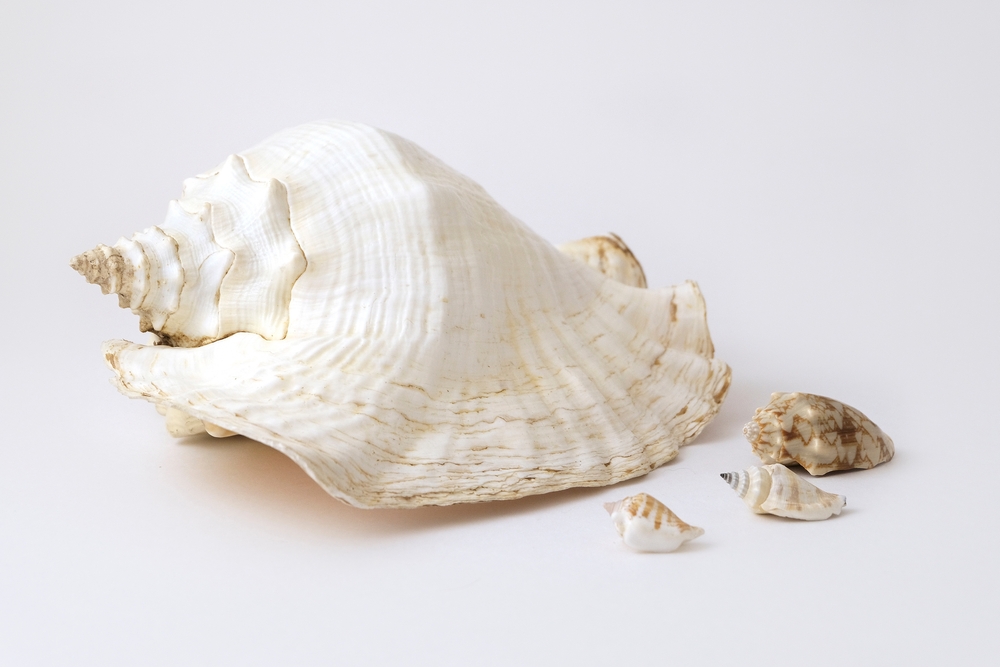Mollusks, which include oysters, scallions, mussels, nautiluses, and snails, have exoskeletons made of seashells.
Giant clams and Tridacna gigas are the largest.
People across the globe have been collecting shells for years, much smaller but still sizeable, and many are on record.
The largest shell species listed in the Registry of World Record Sized Shells is the Bivalve Kuphus Polythalamia, measuring just over five feet in length or 1,532.0 mm.
Its closest competitors are the Tridacna Gigas, which measures almost 4.6 feet or 1,368.7 mm, and the Pinna Nobilis, a little over 3.2 feet or 970 mm.
Table of Contents
How are shells built and how quickly do they grow?
All shell-making mollusks, including giant clams, use calcium carbonate to build their shells and grow them over time.

For at least 100 years, they reside in coral reefs and are known to be extremely long-lived. Many cultures’ quests for their flesh as a specialty leaves them at the threat of extinction.
What is the World Record Shell Registry?
The world’s biggest (as well as smallest) known maritime molluscan species are all listed in the Registry of World Record Size Shells, an authoritative conchological publication.
Printed on a semi-regular basis, there is a searchable archive of the whole register that has been online since 2008.
More than 24,000 entries and 85,000 supporting photos are already available in the registry, which is growing at a rapid pace.
Scaphopods, gastropods, cephalopods, and bivalves have all been included in the registry’s history.
Because chitons’ shells are made up of eight articulated plates, the fixed specimen size will vary widely depending on the preservation method chosen to preserve the specimens.
In the first edition, the smallest adult sizes were first recorded for a few members of the Cypraeidae and Strombidae families, and they now include a third family, the Marginellidae.
Left-handed/Sinistral shells as well as rostrate cowries have their records, too. Land and freshwater species as well as fossils are all included in the registry.
How are shells officially measured?
“The maximum quantifiable dimension of the shell from any direction exclusive of appendages” is stipulated in the registry’s criteria for sample measurement using vernier-type calipers, as well as any mechanisms of hard-shell product made by the organism (i.e. siphonal canals and the like).

As is customary in the field of conchology, shell measurements are given in millimeters and reported to the closest 0.1 millimeters.
Because of human and environmental factors, new records are only acknowledged if they exceed the previous record by at least 0.3 millimeters (mm).
Also, the smallest adult dimension surpassing 10mm falls within this safety limit.
Does the Shell Registry replace falsified records?
Submissions for specimens that equal or surpass the current record are allowed. In the case that the current record holder is found to have been incorrectly identified or not as big as initially reported, they are retained on file for future reference.
How are seashell measurements verified?
Records of size must be confirmed by an independent third party, such as a recognized specialist in the relevant family, before they may be entered into the registry.
They must have used calipers to measure the shells along with their ventral and dorsal features are shown in three photographs as well.
How do I submit my seashell discovery?
There is a submission form behind every print edition that you can use to send in your entries through standard mail or email.
As a result of these rules, older or even more recent publications on malacology may contain data of size that differ from those in the register.
As early as 1999, when senior author Kim Hutsell performed the measurements, the registry’s shells were measured for world record significance officially at Conchologists of America meetings.

What shells are popular among collectors?
Collectors like shells from certain families, including murex, marginally, cowries, and cones. Some shell collectors hunt for and pay a lot for species in popular families that have world-record-sized shells.
The Bailey-Matthews National Shell Museum, for example, has a collection of these shells on display.
Malacologists are also interested in the largest and smallest sizes, which may be useful in determining the boundaries of closely related species.
Scientific investigations have benefited from the registry’s collection of maximum shell sizes.
What are nautilus seashells?
The shells of the nautilus family are among the most exquisite in the ocean. Several hundred million years ago, the Indo-deep Pacific’s slopes and coral reefs became home to this fascinating and uncommon living fossil.
Numerous coiled chambers can be seen in the nautilus shell when cutting it cross-sectionally.
Nautilus bodies are housed in the outside chamber, while nitrogen-gas mixtures fill the chambers within.
The Nautilus’ natural buoyancy and unique jet propulsion are a result of this ability to swim. The iridescent layers of their seashell armor hide them in the water.
These magnificent iridescent shells are sought after by collectors and form stunning jewelry.
What is so special about queen conch shells?
Queen conches thrive in the warm waters of Florida and the Caribbean.

Among the world’s most stunning shells, the majestic queen conch shell will forever hold a place of honor.
In addition to being among the largest seashell species, the queen conch belongs to the Strombidae shell family, indigenous to the Caribbean Sea.
This specific kind of shell is presently threatened because it has been overfished for its flesh and is popular among shell collectors due to its enormous size and appealing appearance.
The queen conch was used as a horn during religious rites and as a decoration by ancient cultures.
Shell bracelets, shell earrings, and hairpins have been made from their beautiful pink shells for ages.
What purposes do seashells serve?
There are a plethora of uses for seashells, and some will surprise you. They’re well-known as religious symbols, as well as jewelry and home decor.
In the agricultural and construction industries, on the other hand, they serve a completely distinct function.
Calcium carbonate mined from the ground can be utilized in a variety of applications, such as building materials, food supplements, pharmaceuticals, animal feed, and plastics.

However, seashells provide an environmentally friendly option for many things. A few of the many possible applications for seashells are as follows:
- Materials for building projects
- Fertilizer made from organic materials
- Toxic waste treatment
- Purification of water
- Nutrition for poultry
What role do seashells play when it comes to poultry?
With a 24% increase in global egg production over the previous decade, the poultry sector requires more sustainable feed sources.
The quality of an egg’s shell is critical for egg producers.
The most frequent calcium sources for laying hens are now ground limestone and seashell. However, whelk shells have also been studied for their potential.
It has been discovered that higher particle sizes or less in vitro solubility might boost the calcium retention of the layers by increasing calcium availability.
In what ways can seashells help to purify water?
In underdeveloped countries, the lack of access to safe drinking water is a serious public health issue.
Water purification and clean drinking water can be provided by seashells in many areas. One of the most successful tertiary treatment procedures is water photocatalysis, which eliminates any remaining trace pollutants.
Titanium dioxide is commonly used in this technique, although it is prohibitively expensive in many underdeveloped countries.
Researchers hope to dramatically cut the cost of water treatment through the reuse of waste product that is renewable, known as hydroxyapatite, a calcium derivative from seashells that is also found in bones and teeth.

Biosorbents, which include mollusk shells, can clear water that’s contaminated at a similar level of efficiency, but with little environmental and human health consequences.
According to research from Bath University scientists, wastewater might be cleansed using seashells leftover from commercial farming, resorts, restaurants, and other foodservice outlets.
If they can scale up the method to an industrial level, it might save “substantial” amounts of money in the long run.
Is it possible to use seashells to remove toxic waste?
When dealing with streams of industrial waste as well as harmful pollution, the removal of high quantities of metal ions is essential.
Here, we offer a method for utilizing discarded exoskeletons from mollusks and crustaceans.
It takes only five minutes to decrease a 10,000 mg L-1 Pb mixture down to less than 0.5 mg L-1, but at greater initial concentrations, the seashell, as well as the clamshell, can each extract about double the Pb as their weight.
This is because biomineralized shell substances sequester metal ions significantly more quickly.
Where can I see the largest specimens of seashells?
Most museum specimen records were compiled by volunteers, and museums rarely have the resources to invest in mensuration, hence the records are typically incomplete.

What is the rarest seashell?
For many generations, Conus Gloria Maris, the jewel of shells with a sea cone shape, was one of the rarest and most precious among the over 100,000 shell species that have been identified.
This huge, cone-shaped shell, also called the “glory of the seas” is found in the Indian and Pacific Oceans.
Two or three bands of fine, chestnut hieroglyphic markings decorate the shell of this animal. Since only a few specimens have been discovered, the sea cone was long deemed the world’s rarest shell.
These shells belonged to affluent collectors and museums and were valued at thousands of dollars.
Where can I find the greatest number of shells?
Shell collectors from across the globe flock to the Gulf Coast of Sanibel Island, which Travel & Leisure Magazine calls the top shelling destination in North America.
The beaches of Sanibel Island are blanketed in tiny, beautiful false angel wings as well as pastel coquinas, thanks to a wide undersea shelf that makes it easy to receive shell-laden current deliveries.

Hotels on Sanibel Island are catering to beachgoers by providing separate sinks and worktables for washing and putting up the day’s haul of shells.

















